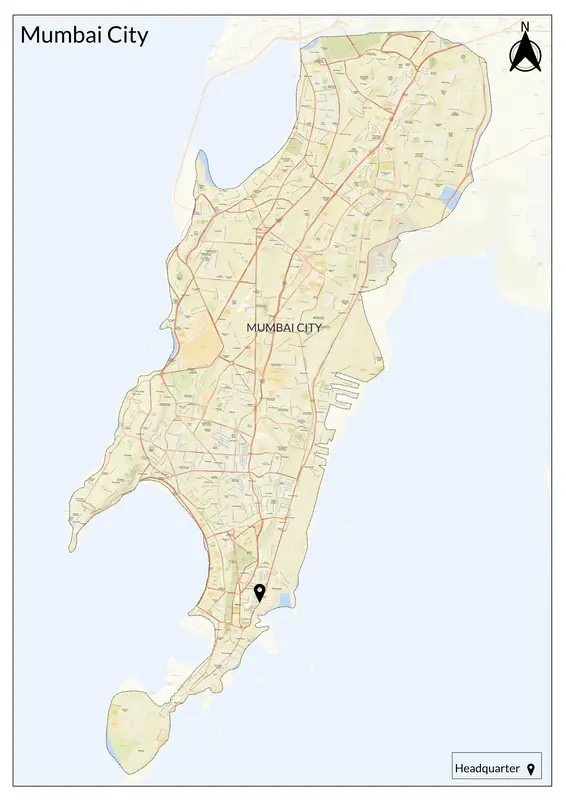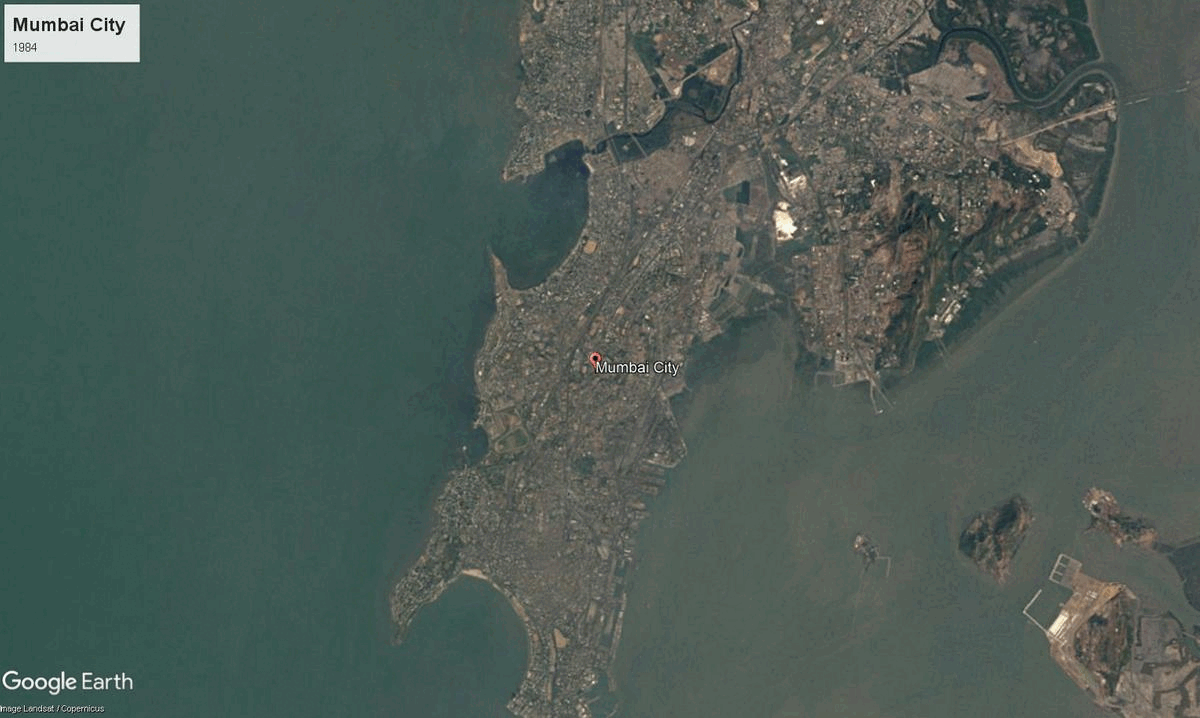Mumbai

157 sq. km
~ 1.43 crore (2019)
832 (2011)
~ ₹4.44 lakh crore (2019) (combined figure for Mumbai City and Mumbai Suburban)
~ ₹3.11 lakh (2019) (combined figure for Mumbai City and Mumbai Suburban)
Mumbai City district, forming the vibrant core of “South Mumbai,” is the historic and cultural heart of India’s financial capital. Occupying the southern tip of Salsette Island, this district was originally composed of seven islands, merged over centuries through extensive land reclamatio, a process begun by local rulers and vastly accelerated under Portuguese (1534–1661) and then British rule (1661–1947). The British established Bombay as the capital of the Bombay Presidency, building grand buildings and promenades that still define the city’s skyline. The district is home to legendary neighborhoods like Colaba, Fort, Cuffe Parade, Marine Lines, Girgaon, Byculla, and Malabar Hill.
Mumbai City’s historic evolution is reflected in its dazzling landmarks, most notably the Gateway of India (built in 1924 to commemorate the visit of King George V and Queen Mary), which became the symbol of Mumbai and the ceremonial entrance to India for colonial dignitaries. The UNESCO-listed Chhatrapati Shivaji Maharaj Terminus is an architectural gem combining Victorian Gothic and traditional Indian styles. Other icons include the world-renowned Marine Drive (“Queen’s Necklace”), the Asiatic Society Library, art galleries and theatres at Kala Ghoda, and the Bombay High Court. South Mumbai is speckled with beautiful synagogues (Kenesseth Eliyahoo), historic churches (Afghan Church, St Thomas Cathedral), mosques (Haji Ali Dargah, built on a tiny islet), and Parsi fire temples, all testifying to Mumbai’s multicultural character.
It is also the district for the Bollywood film industry, classical and contemporary art (Jehangir Art Gallery), dance, theatre, and literature. It hosts music festivals (Kala Ghoda Arts Festival), marathon races, and a vibrant street food and café culture with Irani cafés and old bakeries. The population is diverse, while Marathi remains the official tongue, South Mumbai is home to sizeable Gujarati, Parsi, Jewish, Sindhi, South Indian, and Anglo-Indian communities. The city celebrates Ganesh Chaturthi at an epic scale and also draws pilgrims to the Siddhivinayak and Mahalaxmi temples, Haji Ali Dargah, and Mount Mary Basilica. The district holds the world's largest Parsi population and is home to several iconic communities and cuisines, from Irani cafés to South Indian temples. Rich in architectural heritage, South Mumbai is dotted with Victorian, Art Deco, colonial, and Indo-Saracenic buildings. The district’s environment is strikingly coastal; palm-lined Marine Drive, Chowpatty Beach, and the Arabian Sea front add to its charm. Urban parks (Hanging Gardens, Kamala Nehru Park), clusters of lakes, the Mumbai Zoo, and glimpses of rare urban wildlife break up its dense built landscape. The islands’ rocky origins are still visible in city slopes and in architectural choices.
Mumbai City is coastal and densely packed, with reclaimed land, iconic promenades like Marine Drive, and urban parks, but fewer green spaces than suburban Mumbai. The Arabian Sea laps at its western edge, and the Mithi River marks part of its boundary. Mumbai City district’s seven-island foundation began as a series of marshes and fishing villages, reclaimed and merged over centuries, making it India’s only megacity with such a unique geographical history.
Economically, Mumbai City district is India’s financial epicenter. Nariman Point, Fort, and Ballard Estate host major banks, insurance firms, the Bombay Stock Exchange (Asia’s oldest), law offices, and shipping companies. It is a key center for luxury retail, real estate (with some of the country’s priciest addresses), tourism, medical care, and government.
